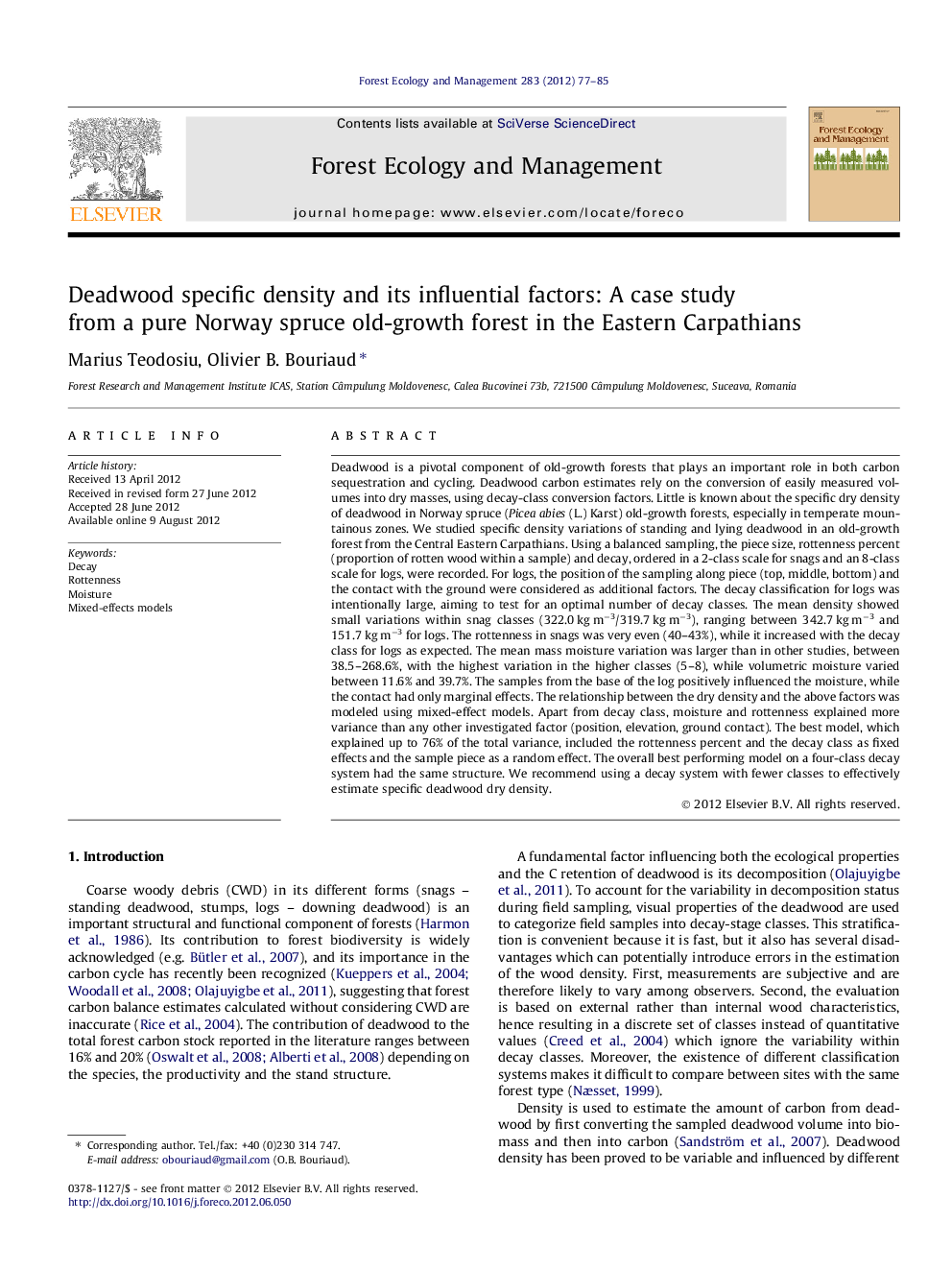| Article ID | Journal | Published Year | Pages | File Type |
|---|---|---|---|---|
| 87042 | Forest Ecology and Management | 2012 | 9 Pages |
Deadwood is a pivotal component of old-growth forests that plays an important role in both carbon sequestration and cycling. Deadwood carbon estimates rely on the conversion of easily measured volumes into dry masses, using decay-class conversion factors. Little is known about the specific dry density of deadwood in Norway spruce (Picea abies (L.) Karst) old-growth forests, especially in temperate mountainous zones. We studied specific density variations of standing and lying deadwood in an old-growth forest from the Central Eastern Carpathians. Using a balanced sampling, the piece size, rottenness percent (proportion of rotten wood within a sample) and decay, ordered in a 2-class scale for snags and an 8-class scale for logs, were recorded. For logs, the position of the sampling along piece (top, middle, bottom) and the contact with the ground were considered as additional factors. The decay classification for logs was intentionally large, aiming to test for an optimal number of decay classes. The mean density showed small variations within snag classes (322.0 kg m−3/319.7 kg m−3), ranging between 342.7 kg m−3 and 151.7 kg m−3 for logs. The rottenness in snags was very even (40–43%), while it increased with the decay class for logs as expected. The mean mass moisture variation was larger than in other studies, between 38.5–268.6%, with the highest variation in the higher classes (5–8), while volumetric moisture varied between 11.6% and 39.7%. The samples from the base of the log positively influenced the moisture, while the contact had only marginal effects. The relationship between the dry density and the above factors was modeled using mixed-effect models. Apart from decay class, moisture and rottenness explained more variance than any other investigated factor (position, elevation, ground contact). The best model, which explained up to 76% of the total variance, included the rottenness percent and the decay class as fixed effects and the sample piece as a random effect. The overall best performing model on a four-class decay system had the same structure. We recommend using a decay system with fewer classes to effectively estimate specific deadwood dry density.
► Dry deadwood density of Norway spruce in an old-growth mountainous forest in Eastern Carpathians. ► Values lower than reported. Possible arguments: sampling method, higher drying temperature. ► In mixed-effects models as a function of decay class, rottenness (fixed) and piece (random) as covariables. ► Best overall model fitted on a reduced decay system with four classes. ► Practical recommendations for dry density estimation of this species.
